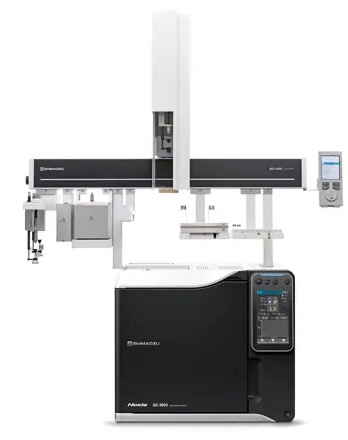Green House Gas Analysis

Greenhouse gases are those that are found in the atmosphere that induce the greenhouse effect, which is an absorbance and emission of infrared energy emitted by the Earth. As sunlight strikes the surface of the Earth, some of the infrared light is reflected into the atmosphere.
![]()
These greenhouse gases absorb that infrared energy and reflect it back towards the Earth. This Shimadzu gas chromatograph system enables the easy qualitative and quantitative analysis of three major greenhouse gases: methane, carbon monoxide, carbon dioxide, and nitrous oxide. The GC-2014 system is also available for some applications.
| System | 220-90804-30 | 220-90804-24 | 220-94937-30 | 220-94937-24 |
|---|---|---|---|---|
| Detector | ECD, MTN/FID | ECD, MTN/FID | ECD, MTN/FID, TCD | ECD, MTN/FID, TCD |
| Green House Gas Analyzer Lineup | N2O >50 ppb CH4, CO2, CO > 0.5 ppm |
N2O >50 ppb CH4, CO2, CO > 1 ppm |
N2O >50 ppb CH4, CO2, CO > 0.5 ppm H2, N2, O2 > 100 ppm |
N2O >50 ppb CH4, CO2, CO > 0.5 ppm N2, O2 > 100 ppm |
| Analysis Time | 3.5 min | 12 min | 8 min | 17 min |
Simultaneous Analysis of Inorganic Gases and Light Hydrocarbon Gases
When analyzing the purity and composition of gases, the analysis of concentrations (on the order of several ppm) difficult for a TCD conventionally required a complicated system combining a methanizer and FID, and that is equipped with a pre-cut mechanism. The Shimadzu system can simultaneously analyze inorganic gases and light hydrocarbons using a simple configuration with a suitable column connected to a BID.


If the hydrogen fuel used in fuel cells contains carbon monoxide or other impurities, this will toxify the catalyst used in the cell, reducing the catalytic performance. Accordingly, high-purity hydrogen fuel is required. A high-sensitivity analysis system for inorganic gases based around the Nexis GC-2030 is capable of a dual-line configuration equipped with two BID units. Connecting two different columns enables a wide range of impurities to be quantified with high sensitivity in a single analysis.
